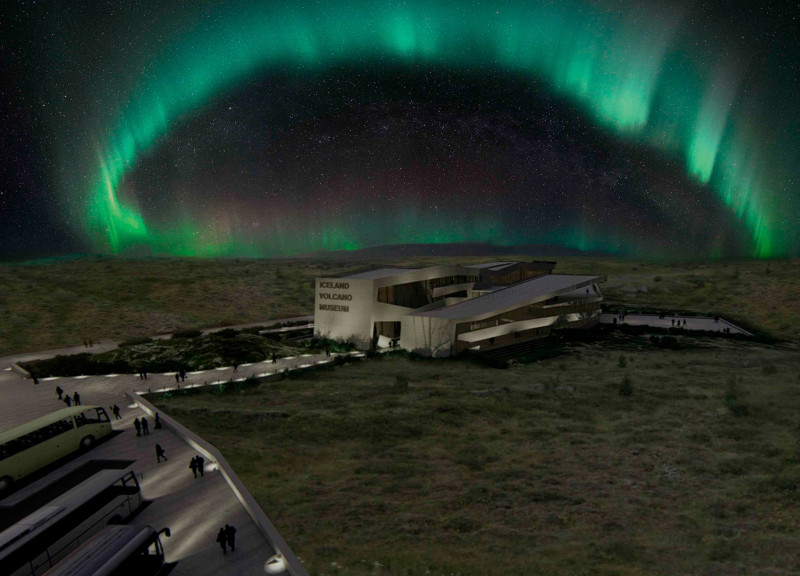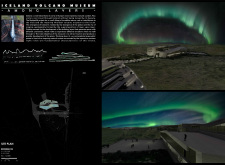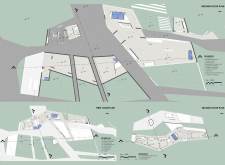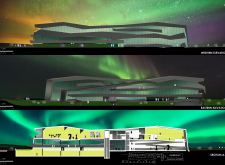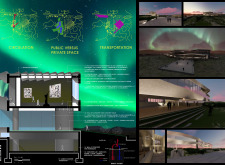5 key facts about this project
The Iceland Volcano Museum is located in Reykjahlíd, a village known for its unique geological features, including Lake Mývatn and the Hverfjall volcanic eruption. The museum serves as a center for cultural learning and tourism, providing insight into Iceland’s natural phenomena. The design concept revolves around the idea of layering, which reflects the geological history that has influenced Iceland's landscape over time.
Architecture Concept
The museum’s architectural design centers on the theme of layering. This concept symbolizes the complex geological layers that shape the environment. It informs the way spaces are organized within the building, allowing for diverse experiences as visitors explore the different areas. Public spaces and private rooms are carefully planned to promote interaction and to create a communal environment for visitors.
Spatial Arrangement
The layout emphasizes movement and connection. Visitors can easily transition between indoors and the surrounding landscape. Large public areas are placed to offer clear views of the natural wonders nearby, especially the northern lights. This arrangement not only enhances visitor experience but also underscores the museum's mission to educate about Iceland's distinctive natural features.
Integration with Landscape
The design takes cues from the geographical context of the site, which ensures that the museum fits well within its surroundings. Although specific materials are not mentioned in the presentation, the design likely considers durability and sustainability to endure the local climate. This approach promotes a strong connection between the architecture and the natural landscape of Iceland.
Natural light plays a key role in the design, particularly through a central atrium that brings daylight into the building. This feature creates a lively atmosphere that highlights the contrast of light and shadow throughout the day, adding to the overall experience of the museum.


